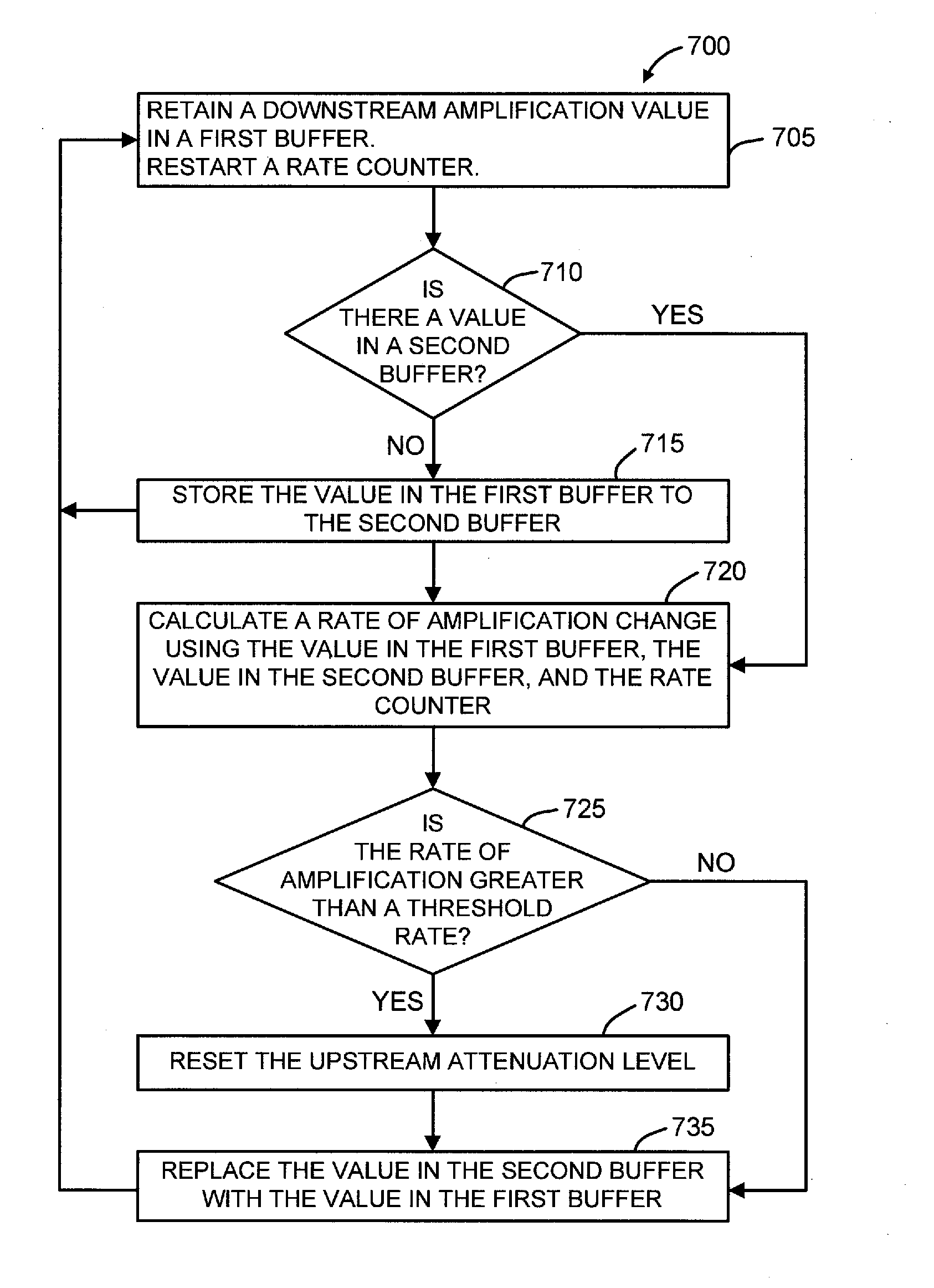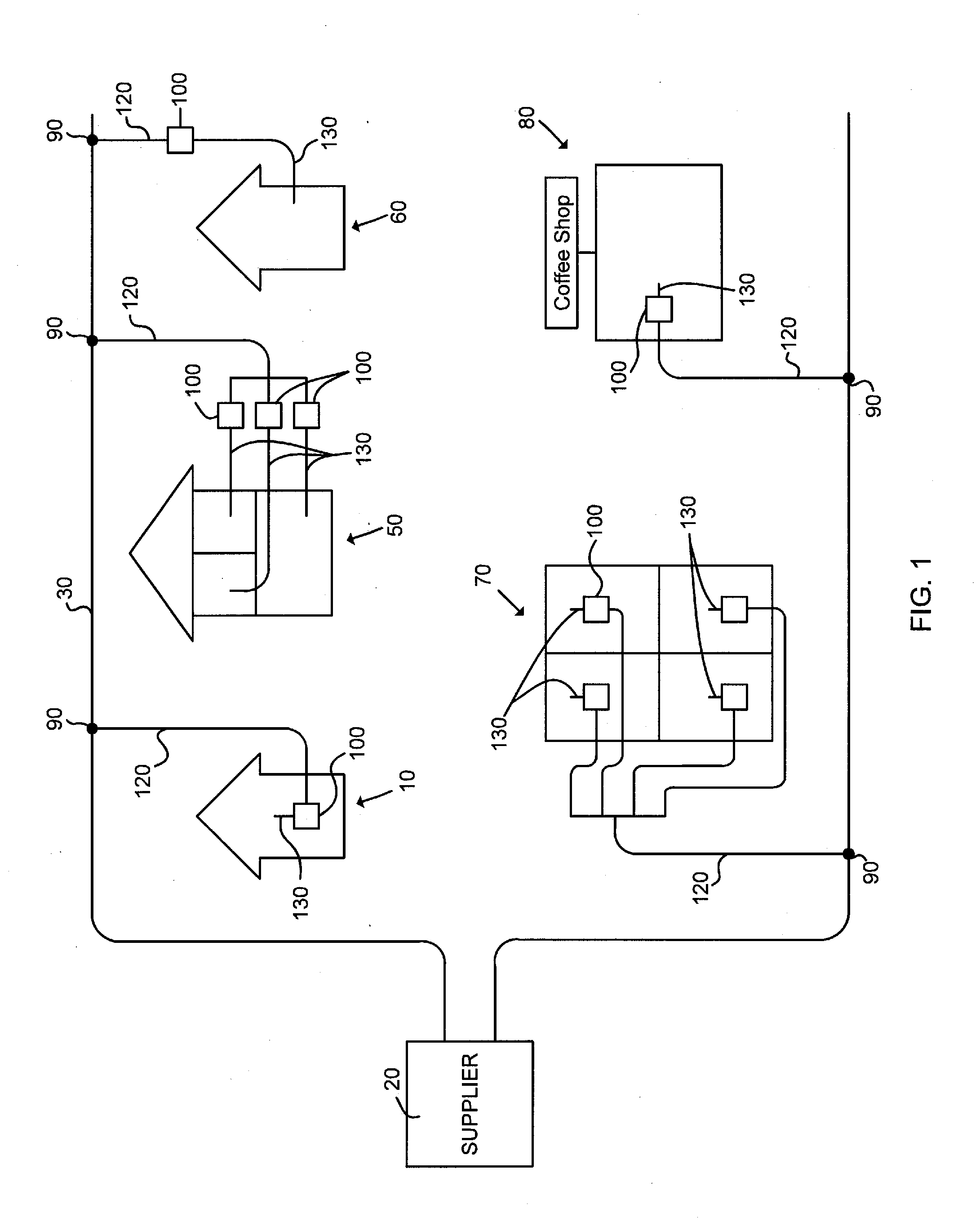Total bandwidth conditioning device
a technology of signal conditioning and bandwidth, applied in the direction of digital transmission, electrical cable transmission adaptation, electrical apparatus, etc., can solve the problems of channel loss, channel exceeding the level specification, and devices that require expensive testing equipment to determine whether, so as to reduce the effect of undesirable interference signals
- Summary
- Abstract
- Description
- Claims
- Application Information
AI Technical Summary
Benefits of technology
Problems solved by technology
Method used
Image
Examples
Embodiment Construction
[0041]As shown in FIG. 1, a CATV system typically includes a supplier 20 that transmits a downstream bandwidth, such as RF signals, digital signals, and / or optical signals, to a user through a main distribution system 30 and receives an upstream bandwidth, such as RF signals, digital signals, and / or optical signals, from a user through the same main signal distribution system 30. A tap 90 is located at the main signal distribution system 30 to allow for the passage of the downstream / upstream bandwidth from / to the main signal distribution system 30. A drop transmission line 120 is then used to connect the tap 90 to a house 10, 60 an apartment building 50, 70, a coffee shop 80, and so on. As shown in FIG. 1, a total bandwidth conditioning device 100 (“conditioning device 100”) of the present invention may be connected in series between the drop transmission line 120 and a user's premise distribution system 130.
[0042]Referring still to FIG. 1, it should be understood that the condition...
PUM
 Login to View More
Login to View More Abstract
Description
Claims
Application Information
 Login to View More
Login to View More - R&D
- Intellectual Property
- Life Sciences
- Materials
- Tech Scout
- Unparalleled Data Quality
- Higher Quality Content
- 60% Fewer Hallucinations
Browse by: Latest US Patents, China's latest patents, Technical Efficacy Thesaurus, Application Domain, Technology Topic, Popular Technical Reports.
© 2025 PatSnap. All rights reserved.Legal|Privacy policy|Modern Slavery Act Transparency Statement|Sitemap|About US| Contact US: help@patsnap.com



